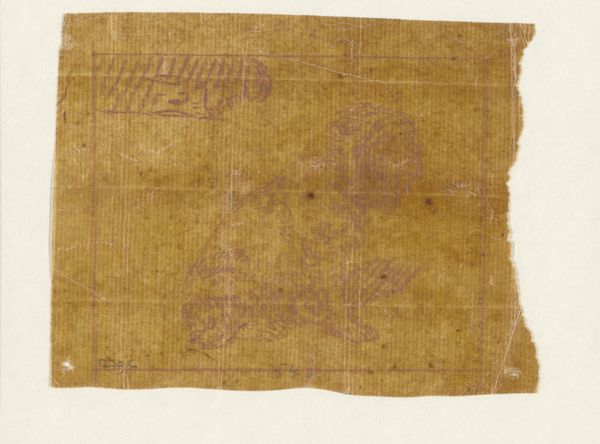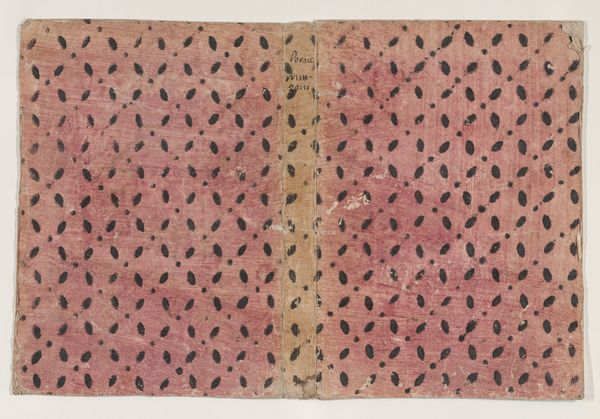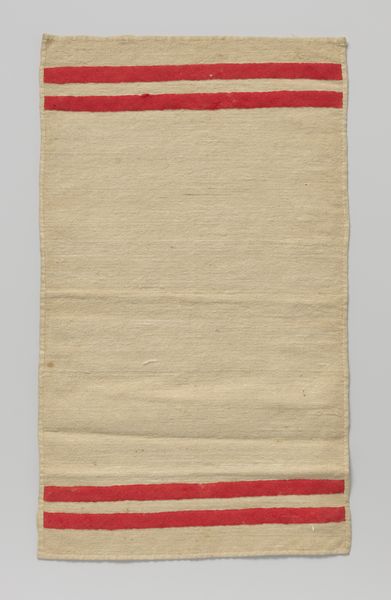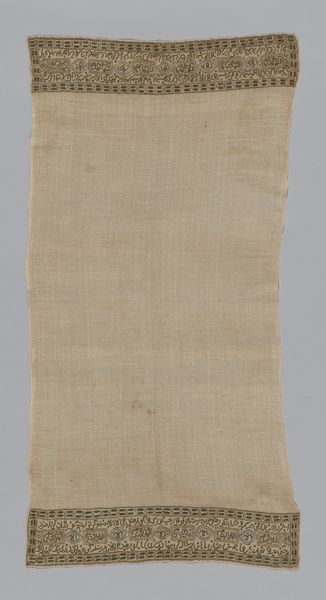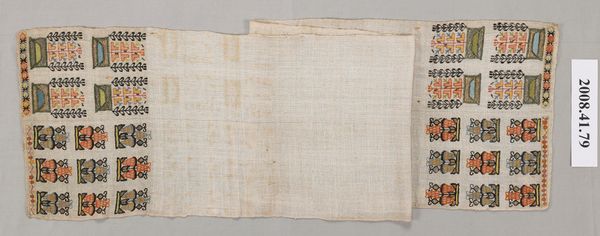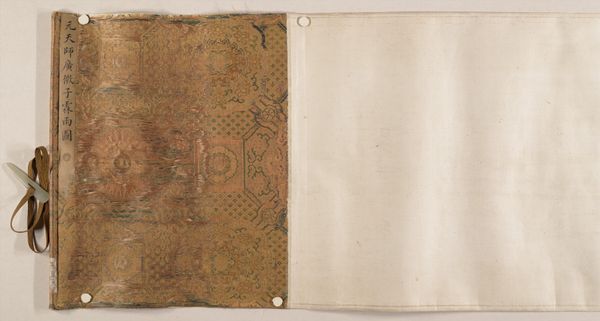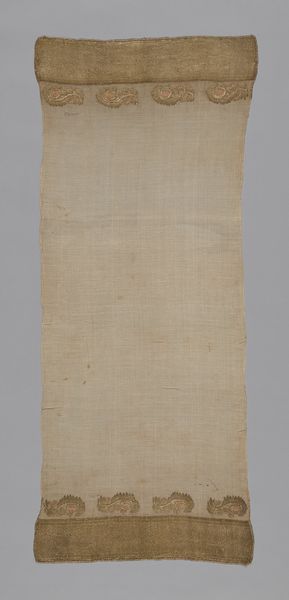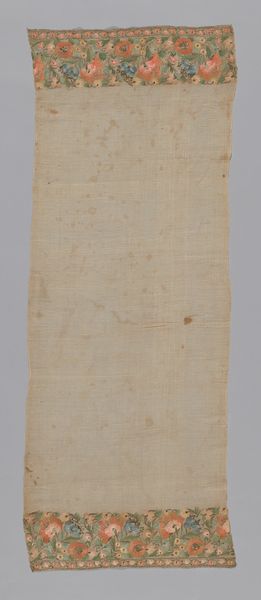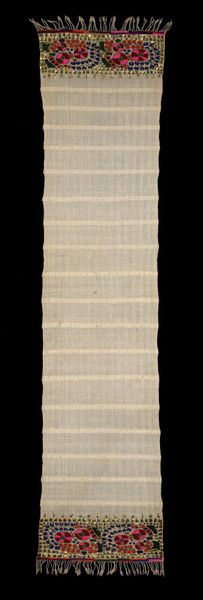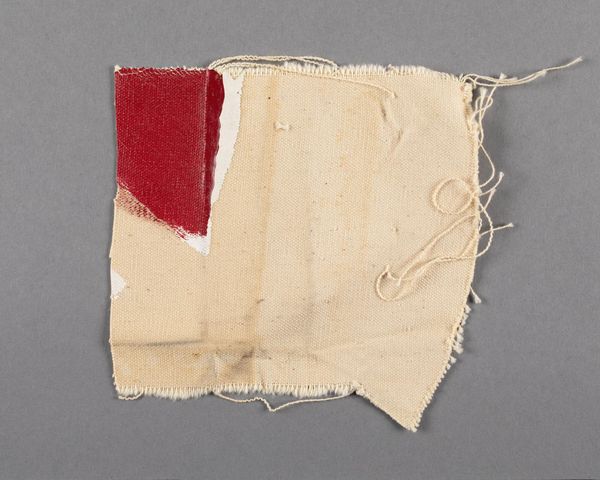
weaving, textile
#
hand painted
#
asian-art
#
weaving
#
textile
#
painted
#
text
#
embossed
#
china
#
history-painting
Dimensions: 203.7 × 31.5 cm (80 1/4 × 12 3/8 in.)
Copyright: Public Domain
Editor: Here we have "Imperial Edict," likely made between 1879 and 1911, a textile work from the Manchu people, now at the Art Institute of Chicago. It’s got these distinct color blocks, each filled with writing or symbols... It looks so formal, almost austere. What am I missing here? What do you see in this piece, beyond its surface? Curator: Beyond the beautiful craftwork, "Imperial Edict" speaks volumes about power dynamics and cultural assertion in late Qing Dynasty China. This wasn't merely a decorative object, but a declaration. Think about the visual language: The colors, likely holding symbolic weight; the text, probably a codified message understood only by a select few. Editor: So, it's not just pretty, it's purposeful? How does it fit into a larger narrative? Curator: Exactly. Consider the historical context. The late Qing Dynasty was a period of internal turmoil and external pressure. Artifacts like this are critical because these power structures affected everyone, especially those marginalized by ethnicity, gender, or class. Can you see how textile like this could reflect that tension? Editor: Now that I look closer, the writing feels more like a barrier than communication. Who was this "edict" really for? Curator: That's a brilliant question. Was it for internal consumption, a show of strength? Or was it, perhaps, aimed at a foreign audience, projecting an image of unyielding authority? By exploring these questions, we move beyond admiring its aesthetic qualities to understanding its role in a complex sociopolitical landscape. Editor: This gives me a lot to consider! I originally saw just a beautiful piece of weaving, but now it seems full of questions about identity and power. Curator: And that's the power of art history! It's about constantly questioning, challenging assumptions, and seeing artworks as active participants in shaping our understanding of the past, and indeed, our present.
Comments
No comments
Be the first to comment and join the conversation on the ultimate creative platform.
